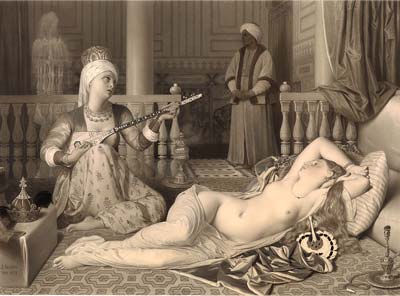
This exhibition presents seventeen exceptional drawings and three letters by Jean-Auguste-Dominique Ingres (1780–1867), one of the greatest draftsmen and portraitists in French history. Spanning the artist's career—including his days as a young student in Toulouse, his tenure as a pensionnaire at the French Academy in Rome, and the 1850s when he ran one of the preeminent studios in Paris—the exhibition reveals the freshness and originality Ingres brought to the classical style.
The centerpiece of the exhibition is the large-scale graphite and black chalk Odalisque and Slave of 1839, which likely served as the model for the engraved version of the subject. The epitome of exoticism and orientalism, this exquisite drawing is emblematic of the erotic tales of Arabia that had captured the imagination of nineteenth-century Paris. One of the most iconic drawings to be included in the exhibition is Ingres's Portrait of Monsieur Guillaume Guillon Lethière of 1815, which depicts the new Director of the French Academy in Rome in all his convivial pomposity. Included among the letters is one that a homesick Ingres wrote to his fiancée after arriving in Rome in 1806.
Although Ingres's Neoclassicism has often been framed in opposition to the Romanticism of Eugène Delacroix, Théodore Géricault, and others from his time, his worked influenced many future artists, including Matisse and Picasso. Happily for visitors to the Morgan, the Ingres exhibition runs concurrently with David, Delacroix, and Revolutionary France: Drawings from the Louvre, which features an additional ten sheets by the artist among the more than seventy drawings from the Louvre that are on display.
Ingres at the Morgan is organized by Esther Bell, Moore Curatorial Fellow in the Department of Drawings and Prints.
This exhibition is made possible by the Rita Markus Fund.
Jean-Auguste-Dominique Ingres, Odalisque and Slave, 1839, graphite, black and white chalk, gray and brown wash. Thaw Collection, the Morgan Library & Museum.
